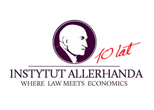
2021, t. 4, nr 1 (7), poz. 2
2021, Vol. 4, No. 1 (7), item. 2
Trademarks containing religious symbols in the jurisprudence of the Patent Office of the Republic of Poland
In the world where everything belongs to someone, trademark registration serves the purpose of appropriating symbols. But, as stipulated by the law, certain symbols cannot be appropriated. Whoever tries to do it – acts wrongly, and the State through its Patent Office, having judged that it is wrong, should refuse to register the mark. This assessment reaches its peak of difficulty in the case of religious symbols. Religion may distance itself from symbols altogether – from the simplified images of God, eternal matters or of its prophets. If they already exist, these symbols usually are not and cannot be ‘someone’s’ (it does not follow, however, that they are nobody’s), just as non-world entities – to which these symbols refer to – cannot be ‘someone else’s’. Some are ‘not made by a human hand’; the very thought that they could be registered as trademarks is ridiculous. Some seem to be something else, like an ‘elephant’ on the breast of the singer Rihanna which turned out to be an image of the Hindu god Ganesha. Some of them are, but the pressure is too great, and they can, like images of Guardian Angels stripped of their power, be bought in a market square. In this article, I will look at the Patent Office of the Republic of Poland when it is making such difficult assessments, trying to establish certain patterns in its decision process and formulate appropriate guidelines in this regard.
Keywords: trademark, trademark law, religious symbols, patriotic symbols, cultural symbols, Christian symbolism, industrial design, industrial property law, religious freedom
This article is published in Polish





